
Building Equitable Vampyre/Donor Relationships
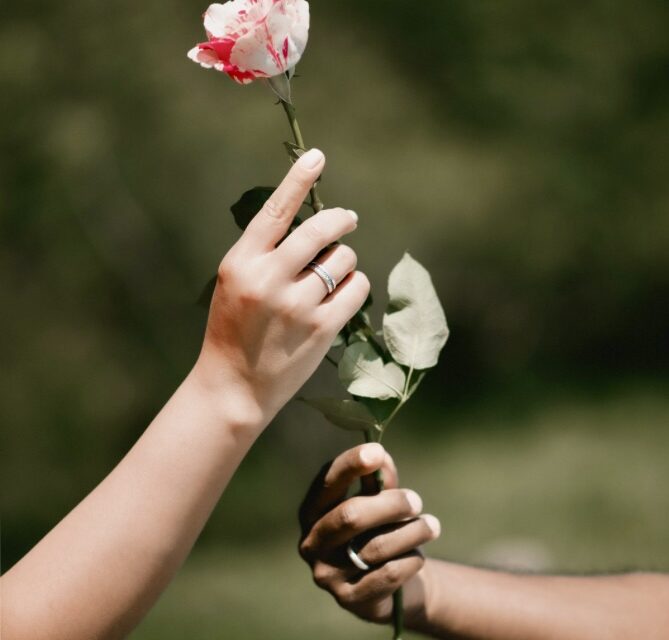
The vampyre and donor relationship is one many of us cherish. Not every vampyre has or needs donors, plenty can get by on ambient energy or other feeding means that don’t necessarily involve direct donors such as animal blood. For vampires who have or need donors, they know how life changing that bond and connection can be for everyone involved. Donors are so very important and precious to many. They feed and sustain us, sharing their blood and/or vital energy with us. An act of intimacy and deep care. The vampyre & donor bond is one of deep trust. For both parties, you are allowing each other to see you in a vulnerable state, you are trusting each other with your needs, your safety, your care, often also with your bodies, or with your energy. This connection can bring great closeness if you let it, but not everyone seeks to build their relationships that way.
Vampyre and donor relationships are as varied and diverse as the rest of the community. While there may be some romanticized ideas out there, there is no universal path, no textbook example, and no one way for the relationships to look. It’s up to you, as vampyre and donor, to work together to build the type of relationship that fulfills and serves everyone involved. This article is going to focus on folks who have the desire to build consensual, healthy, long term relationships as vampyre and donor in an equitable manner.
Equity is the understanding that every person has different circumstances and needs, and those needs and circumstances mean that what one person’s needs are going to be different from what someone else needs, and so resources and opportunities will need to be allocated differently so that everyone gets what they need in order to thrive. This differs from the notion of equality where you treat and allocate resources the same way for everyone despite differences in needs, access, and opportunity. “Equality”, on the other hand, often results in some people with different needs not having their needs met or enough resources to thrive because they have different challenges or disadvantages.
Personally, for both blood and energy, my donors have always been folks I already had intimate relationships with, be they romantic partners or very close friends. I’ve always known someone for a year or longer before even bringing up the subject of vampirism, let alone discussing the vampyre and donor relationship.
I’ve been very fortunate in that every time I’ve opened up about my vampirism to a partner, and even a handful of close friends, that person has offered to feed me, usually resulting in a long term donor relationship of some variety, but I have also had experiences where we have one or two feeding exchanges and we ultimately decide that we don’t want to continue that dynamic. Sometimes people are just curious about what the experience might be like; other times, they find they aren’t up to the task of being a steady donor or unable to give as much as I need. Some of those people volunteer to help me out during dry spells when my regular donors are less available for feeding, but others simply find they didn’t get much out of the experience.
Early in my awakening and exploratory phase, I was nervous about how hard it would likely be to seek out and vet donors, but before I even got too deep into my exploration, I had a boyfriend who was offering to feed me. He was very open to exploring and experimenting with me in terms of both blood and energy. Every single one of my experiences has followed a similar pattern. I don’t have practical advice for finding a donor through other means such as personal ads, or seeking out people specifically for the purposes of being your donor.
I am aware of communities such as the fetlife vampyre community and The Black Books. I’ve definitely curiously browsed those sorts of spaces, but I never felt comfortable enough to seriously consider using them for real. Vampiric feeding, for me, is deeply personal and really intimate. It requires a great deal of honesty, trust, and safety that I don’t usually feel comfortable seeking from a stranger. I want to make sure that I am safe and that I can keep my donor partner safe. That’s much easier to do and feel secure in when there is already a solid foundation of trust, care, and mutual respect. Even if I were to hypothetically use something like The Black Books to seek a donor, I imagine I wouldn’t feel comfortable initiating that sort of relationship for a long time. There would need to be a time of building the friendship and overall foundation of the connection before we could even consider adding feeding into the mix. That’s just me, however, not a judgment on folks who are comfortable moving differently. I’m glad those spaces exist, and I really applaud folks who feel comfortable using them to seek feeding partners!
Even within my pool of close friends and intimate companions, there is still a lot of nuance to who I think might make a good feeding partner. I have plenty of people in my life who I care for, trust and respect who care for, trust, and respect me in return who I still wouldn’t consider for a possible donor style relationship. There’s more to it than that. So much of it really is vibes, as well as things like energetic and over health, philosophies and behavioral practices surrounding consent, community, communication, and equity. There is an extra layer of compatibility I look for when it comes to thinking about if someone might be a good donor fit for me. And they also have to do all that same work and introspection to see if they deem me a good vampyre fit for them in return. It’s a mutual agreement and arrangement.
Actually building and establishing your vampyre and donor relationship can feel really daunting for many folks. For a lot of us, when we’re first starting out, we may even fear that we’ll never successfully find a donor or vampyre to partner with. Sometimes, that fear keeps us from thinking too far in advance and really working out what we want and need out of the relationship or other important considerations. There are a lot of things to consider, not just for yourself, but for your partner in this dynamic. While it’s important to know what your ideal and ultimate desires and needs are, it’s also important to expect a degree of compromise and meeting in the middle. Managing your expectations and being flexible is an inherent part of this process.
I’m going to throw a lot of questions, things to consider, options and ideas at you. Take what you need and leave the rest. Not every single thing I’m going to bring up is going to matter to every vampyre and every donor. It’s not going to be relevant in every relationship. Some of these things might feel like overthinking or over complicating for some people, for others they will be very necessary or just right.
I don’t think it hurts to over plan or overthink a bit, especially when you’re starting a new dynamic with a new person or if you’re new to feeding exchanges in general. As you gain experience or you build a rhythm with a feeding partner, you can simplify a bit more. Though, I imagine for some, it can be really overwhelming to try to cover all the bases or think through every single thing. Don’t let yourself get bogged down, and don’t let yourself get caught up in trying to do it perfect the first time or try to never ever hurt anyone ever even by accident. Give yourself and your feeding partner grace. No one is perfect. Even experienced folks fuck up or make mistakes or cause accidental harm. It happens. We try our best to prevent and avoid it, but it can still happen even with the best of intentions. Just do your best to try to minimize how often it happens, and do your best at making amends or correcting any harm to the best of your ability. The right intentions go a long way, and so does apologizing, making amends and repairing relationships when harm or an unfortunate accident does occur. Do what you need to do to make sure everyone is safe and well cared for at all times, but especially in the event of a mishap. Ask the injured party what they need and make sure you’re learning how to handle things like first aid, energy work skills other than just feeding. Know when and how to stop, when to seek outside help, or in the context of blood feeding, know when you may need to seek medical attention.
General Questions & Considerations
Things to consider for any vampyre and donor relationship, regardless of what exactly is being donated:
Many people like to formalize their agreements with a written contract, especially if there is going to be bloodletting involved. A literal paper contact detailing everything about the dynamic and how folks can end or opt out of it any time, that both parties can read, review and sign, is a ‘Cover Your Ass’ step that many people find helps them feel comfortable or protected should something go wrong or change down the line. ‘Hope for the best, prepare for the worst’ in action.
It’s a good idea to have a few conversations over time, taking things slow in terms of actually finalizing all agreements. Some people prefer to have all these conversations before any feeding exchange occurs, but that doesn’t work for everyone. Some people are more comfortable hammering out their most pressing details and needs up front, having a few feeding sessions, and continuing the initial planning and negotiation phases while having your first few sessions. For some people, they find that these conversations may come up after a feeding exchange has already occurred. Meet yourself where you’re at. What works for you and your feeding partners and feels equitable and comfortable is what works for you, and it’s okay if you need to experiment a bit to work that out. It’s okay if what works for you looks different to what works for others. It’s okay if you don’t find anything here super helpful. At the end of the day, you know yourself and hopefully your partners better than some stranger on the internet. Whatever approach you take to the beginning of building your dynamic, it’s a good idea to regularly check in and see if anything needs to be adjusted or changed over time.
There are tons of ways to go about check-ins. Questions to ask yourselves about that process:
- How often do you want to revisit the terms of your relationship?
- Is this something you do on a strict schedule? Monthly? Quarterly? Yearly?
- Or is it more fluid? Checking in when either party notices something that isn’t quite working for them?
- Do you instead do small check-ins before or after each feeding session?
Before we even get too deep, it’s important to ask some big, occasionally overlooked questions. Even if you don’t necessarily feel the need to go over every single one of these with your potential partner, being able to ask yourself and articulate your answers will prove helpful in your negotiations and the relationship building process.
- What do vampirism and feeding even mean to you? How do you understand these terms? Write it out, be as specific as possible, then share that with your partner. You’d be surprised to learn how many people start this process by not speaking the same language, so to speak, and not understanding or defining these terms the same way. It’s not at all uncommon for one party, often the vampyre, to know, understand, or be experienced with more than the other partner. If there is a discrepancy, what can you do to get on the same page? Are there resources you can share and work through together to get better aligned? Maybe make a fun bonding experience out of it.
- Do you want this? Why do you want or need this?
- Do you understand what you are exploring and what you are consenting to?
- Are you enthusiastic about this? (Enthusiastic consent is a nuanced conversation outside of the scope of this article, but enthusiasm from both parties is often ideal)
- Do you trust yourself to navigate this process to the best of your ability?
- Do you truly trust each other in this? Do you trust each other to know your own needs and limits and to advocate for yourselves? Do you trust each other to take just as much care of and advocate for each other’s needs as you do your own? Do you trust each other to respect limits and understand that consent can be withdrawn from either party at any time and for any reason or no reason at all?
- What do you want or need out of the dynamic? In a perfect world, what would this look like? What parts of your perfect scenario can you be flexible about and what parts are you unwilling to give up?
- What do you hope to get out of the dynamic? What are things you’d like or enjoy? What things are in the ‘take it or leave it’ category for you?
- Are you willing and able to compromise, adjust and change course for the health, safety, well being, and needs of everyone involved? Do you want, need, or expect that from your partner as well?
- Do you have any expectations? Are you voicing those expectations to your partner?
- What are you exchanging/donating/feeding on? Blood? Energy? Both? Something else?
- What levels of risk are willing, able and prepared to accept? What risks do you refuse to take or are otherwise unable to compromise on? Always move at the pace of the partner who has the most level of caution. Be prepared for the possibility that if your risk profiles are too different, that you may be truly incompatible with a particular person.
Oftentimes we are approaching feeding from the perspective of ‘everyone needs to agree to make the choice to do the feeding before it happens’. I think that is a wise way to go about things, especially at first, with new partners, or with more risky types of feeding. It’s okay to at least consider or get curious about the other side, though. Are there any scenarios or types of feeding you feel comfortable with an approach where the agreement between you is “this type of thing is usually okay, and you are welcome to initiate at any time without asking first. If I am not up for it in the moment, I will ask you to stop.” Some people like this model for light contact surface feeding with long term partners they have a good rapport with, or light surface feeding during big energy events like concerts and night clubs, some folks even like it for sex in specific, pre-negotiated circumstances. Some people do not like this model at all for any style of feeding. There is no right and wrong way to proceed other than what is right and wrong for you and your partners. It is very important to always respect the boundaries, needs, requests and autonomy of your partners, just like anything else.
In sexual or kink relationships, it’s not uncommon for folks to fill out “Want/Will/Wont” charts laying out exactly what acts they really want to be a part of their dynamic, acts they aren’t the most enthusiastic about but are still willing to try or participate in or compromise on with this particular partner, and acts they absolutely won’t participate in and are not up for negotiation or debate. That framework can be helpful in a vampyre/donor relationship too if it floats your boat!
Getting a little more specific about what the space between vampyre and donor is going to look like, consider these questions or topics of discussion.
- What is the dynamic? What is the primary way you envision relating to each other beyond just “the donor gives blood and/or energy to the vampyre”? Intimate, clinical, transactional, medical, caretaker, sexual, romantic, friendly, familial, cozy, kinky, power exchange, serious, playful
- In what contexts and situations is feeding allowed? When and Where is it appropriate? When and where does each party feel comfortable engaging in a feeding exchange? What exactly is being fed upon may or may not impact how folks are answering these questions. Are there any contexts where feeding is to be expected? Are there contexts in which feeding is completely off limits?
- Should all feeds be initiated verbally every time?
- Do you want to plan/schedule feeding in advance or is there room for a little spontaneity?
- What do both the vampyre and donor need in order to be physically and mentally comfortable during the feeding exchange?
- How ritualized do you want feeding to be, if at all? What does “ritualized” even mean to each person involved?
- How often do you want to feed? How often do you need to feed? What is the longest you’ve gone without feeding and what were the consequences and symptoms of need (if any)? Do you know how long you can go before you enter a state of deep need(if applicable)? Do you know the signs of deep need? Do you know how deep need impacts your feeding? Do you end up feeding subconsciously (for energy feeders)? Does deep need increase irritability or carelessness? Do you end up feeding too quickly or too deeply? Do you end up losing control? Do you know how to prevent yourself from entering a frenzy or loss of control? Can you bring yourself back if you start losing control or do you need outside help from your donor? What other choices or protocols might you need in place in the event of frenzy or over feeding?
- Whose responsibility is it to initiate the feeding session? Do you set a schedule? Is it more fluid and as needed? Do you always want to decide or initiate together? Is it instead always on the vampyre to say, “hey I need to feed”? Or is it on the donor to say, “hey, I’m willing and able to donate”?
- How quickly or slowly does the vampyre feed? Is there an average timeframe you want your feeding sessions to be? 5 minutes? 15? A half hour? An hour or more?
- What level or history or experience does each party have with vampiric feeding? If you have history, what mishaps or mistakes have happened in your past and what did you learn from them? What do you do differently now to prevent such things and take care of everyone involved?
- What level of experimentation are you comfortable with in your feeding sessions? Is your partner open to trying out methods you’ve never used before or have less experience with? Do either of you prefer if one or both of you has some level of proficiency in a feeding method before you introduce it into your dynamic? How do you navigate experimentation and trial and error if both parties have little to no experience? What sorts of research or practice might you do in advance? Are you doing that separately or together, maybe both?
- If you’re less experienced in general, things may look more like “I don’t have very much first hand experience, so far I have played with energy on my own and practiced extending and withdrawing my tendrils from the space in front of me and making energy balls. I’ve done a handful of ambient feeds, but I’ve never fed directly from a person. Are you willing, able, and comfortable with me going through the learning curve of how to do that safely? I can provide you with the resources I’ve been using to help me understand safer methods of feeding if you would like.”
- Do you want your feeding sessions to be pretty similar each time? Does either party need or benefit from having an established pattern, rhythm, or protocol to your sessions? Do you want or need to switch it up or plan to expect a lot of variation each time?
- How open or secretive do you want and need to be about your dynamic? Is it okay if some people know that you are vampyre and donor? If so, who can know? Who must you keep this information away from? Are you okay with someone knowing you are doing feeding exchanges, but not okay with your partner sharing intimate details of those exchanges with people? Are there any outside parties you might be obligated to disclose the nature of your relationship to for any health and safety reasons?
- Is there ever a context where you might want to take pictures or video before, during, or after a feed? Do you have hard boundaries about never taking pictures or video?
- What levels of touch is everyone seeking or comfortable with? Are hands okay? Is direct mouth contact okay? Does one or more partners prefer no touch at all (for energy feeding)? If so, are you okay with hovering mouth or hands closely instead or do you prefer more distance, only making contact energetically? Are both parties of a skill level that allows for this or makes this easily achievable?
- Do you have plans and protocols to ensure everyone’s safety, or in the event that something doesn’t go as planned? What are they? How often do you review them? Do you practice them?
- Does anyone feel a need or desire to have safe words for your feeding exchanges? Is communication in plain old English good enough or preferred instead? Do you wish to establish a nonverbal signal or action that acts as a safe word in the event that someone may find speech difficult for any reason, be they are in distress, go nonverbal, or are having an emergency?
- For the donor, what are you doing to maintain your health and well-being to ensure the quality of your donation remains consistent and beneficial for both parties? Are you well hydrated? Are you well rested? Do you have any need or desire to adjust your diet or lifestyle? Does the level or exclusivity or lack thereof impact how either party handles things?
- For the vampyre, what are you doing to make sure you don’t inadvertently expose your donor to unnecessary risk, pathogens, dangers, or harm?
It is important to discuss if there are any expectations of exclusivity, or needs or desires from either party that prevent exclusivity. Is this going to be an exclusive relationship where you only engage in feeding exchanges with each other? If not, will the vampyre have multiple donors? Will the donor feed multiple vampyres? Both? Might this fluctuate over time? Some vampyres, for both blood and energy, have high needs and find themselves needing to feed more often than the donor is able and ready to safely give and thus need a small feeding circle of multiple donors to safely get what they need without over feeding from their donors. Some vampyres feed on both blood and energy and not every donor is comfortable donating both. The vampyre needs to be aware that the donor may not always be willing and able to feed the vampyre every time they want or need to feed. Make sure you’re taking care of and balancing everyone’s needs and best interest. Don’t overfeed from your donor, and don’t feed when your donor is unwell. Does the vampyre partner know how to manage and balance their needs, cravings, energy (if applicable), and symptoms in the event that they aren’t able to feed for a while or on their typically agreed upon schedule?
Donors, do you know your limits? Do you know how much blood or energy you can safely give without ill impact on your well being? Do you know how to advocate for yourself to make sure your vampyre isn’t taking too much and that they know, in advance, what the limit is? How do you communicate that your vampyre is getting too close to the limit?
Vampyres, do you know how much you need, if you *need* at all? If this is more about desire to feed, do you know how much is your ideal? Either way, do you know how much is the bare minimum you’re interested in taking in a session? What are you doing to make sure you’re hearing and respecting your donor and their limits? How are you making sure you’re not over feeding, causing any discomfort, or doing any harm or creating unnecessary risk?
Setting the Stage
How does each party want feeding sessions to look, feel, and be for them and how they want to feel during and after?
Do you want to “set the mood” for your feeding sessions? What do you both need to feel relaxed, comfortable and in the correct headspace for the feed? Do you like fun ambiance things like candles, incense, music, lighting. Do you want silence, a tv show or movie playing in the background? Do you need to silence or turn off cell phones and electronics to minimize distraction?
Do you want to lean into vampire aesthetics when it comes to any of those details? What kind of clothes are you going to wear? Soft, comfortable clothes like pajamas or sweats? Do you need to be mindful about getting blood on clothes, blankets or other surfaces? Do you begin your sessions with meditation, breathing exercises or some other sort of connective activity?
How do you keep yourselves and the feeding location clean and clear for everyone’s safety? Does one of you want to take ownership and responsibility of this or do you want to do it together? Does one of you want to be the point person on this, but also seek out your partner’s assistance or input? What does your partner want and need here?
Sex and Feeding
Is feeding during sex okay? Is feeding during sex something either party really desires? Is it something either party really does not want or has boundaries around? If it’s something you’re agreeing to, what are your protocols? Is it always an “ask first” scenario, or are you moving forward with the expectation or understanding that feeding and energy work or blood play may possibly be something that regularly happens during sex? How do you want to initiate and negotiate for that? Is it a special occasion thing? Lots of people like mixing sex and feeding, equally as many people prefer to never want to mix them, no matter what the relationship is between them and their feeding partner. Feeding and sex can be an incredible mix, but it can also be a complicated and risky one, no matter what you’re feeding on. For some people, they find themselves unable to focus or feed properly if they are also engaging in sex, or they may struggle to balance and manage their and their partners’ energy. Or they may find sex is too risky or messy to mix with blood feeding. Some people simply do not want to or do not like the idea of sexualzing their feeding. Some people don’t engage in sex at all in any context. It’s okay if you don’t ever want to mix them, or if you decide you need to build up to that over time.
If you are the kinky type, do you want to incorporate any of that into the dynamic? Power exchange? Titles or pet names? Blood play? Role play? Safe words Etc. If we are using any kink elements are you only using them while actively engaged in a feeding session, or do they carry over into other contexts? Do you have hard boundaries over them never carrying over into anything outside of the feeding exchange?
If you’re mixing feeding and sex or kink (or all 3), do you view the sex/kink as an extension of your feeding relationship, or do you view the feeding as an extension of your sex/kink relationship? Are those things even different for you? Does that distinction even matter to you whether it’s different or not?
Have you talked about what happens in the event that someone wants or needs the sexual and/or kinky relationship to end but not the feeding? What about if someone wants or needs the feeding partnership to end, but not the sexual and/or kinky relationship? Is everyone able to handle those outcomes? How do you navigate that on a micro level? What happens if someone needs to put an end to the sex/kink in an individual session but not the feeding? Or do you prefer to cease all activity if someone wishes to terminate any one element in a session?
For Energy Feeders & Donors
What is your background, understanding, or framework for energy work? How do you understand and work with energy? Is your process compatible with your partners? If not, are there adjustments that can be made to change that?
Donors do you know how to terminate the connection between you and your vampyre and withdraw from the feeding process should you need to? Is it perhaps a good idea to regularly practice doing so with your vampyre?
For both vampyre and donor, what are your skills as energy workers? Do you both know how to connect and disconnect? Do you both know how to push and pull energy? Do you know how to cycle the energy between each other? How do you ensure the energy is of the most ideal quality for everyone involved? How do you ensure that both vampyre and donor are feeling good and refreshed after the feed? Is the more experienced partner willing and able to teach the less experienced partner or otherwise help them bridge the gap? If so, how? If not, how can you bridge the skill gap between you to ensure safe exchange?
What level of feeding is the donor consenting to? Surface feeding? Deep feeding? Does everyone know the difference? If you are interested in deep feeding, is everyone involved fully aware of the nature of deep feeding, how it works, potential results, effects, and risks? Are both the vampyre and donor skilled and perceptive enough to know the difference (not just intellectually or theoretically, but by how things actually feel first hand) between surface and deep feeding? How do you course correct if you accidentally go too deep?
For the vampyre, do you need to be the person actively pulling energy in from the donor in order for it to be most effective, or can you have just enough benefit from the donor pouring, pushing, or funneling energy into you? Do you experience a difference in taking in the donor’s personal vital energy and any sort of universal life energy such as reiki? Many vampyres report being incompatible with reiki either not being able to benefit from it at all, or not being able to process or digest it, some even report feeling almost as if they are allergic to it or it otherwise not sitting right with their energy body.
Do you wish to have a dynamic where consent to touch between you and your partner is also consent to light contact feeding? If so, what are some safeguards you might want to have in place, and how do you make sure every party feels safe to retract consent to this sort of contact?
Is feeding during connected activities like cuddling, kink, or good conversation okay?
What does your energy hygiene look like? How often are you cleansing your personal energy and with what methods? Should you be doing this immediately before a feeding session? Is this something you want to incorporate into the feeding process?
Is long distance feeding something you want to incorporate into your dynamic? If so, do you handle it mostly like in person feeding or are there separate protocols? Is distance feeding your only accessible feeding method? What tools do you use to facilitate the process? Photos? Video calls? Voice calls? Text exchanges? Are you agreeing upon a certain visualization, image or technique to help you connect and focus the feeding process, or is one person doing most of the energy work and the other person reporting what they feel and notice? Are you using energy cords, links, or connections to feed or just visualization of energy sending techniques? Are you relying only on energy and how things feel, or are you also in verbal contact to make sure things are going smoothly? (I highly recommend the latter)
For Blood Drinkers & Donors
How often are all parties getting tested and do you know what types of tests to ask your doctors for? If not, do you know where to look for that information or how to vet your sources?
Once you get to the bloodletting itself, what bloodletting tools and methods are you going to use? Do you expect that to change over time or stay the same? Do you want to start with something smaller or simpler like lancets, and then build and train for something more advanced like venipuncture?
Who is using the bloodletting tool, on what parts of the body are we comfortable using the bloodletting tool, and what anatomical or health and safety information are we using to help make informed decisions about that?
What level of training do you already have? What level of training or practice do you want and need before you begin? If you are going to practice, what are you practicing on? Yourself? Silicone body parts? (If so, do you understand the ways silicone body parts differ from human bodies, and how the amount of pressure or depth you need on a person might be different from silicone?) Your partner? Where might you need to get training or information from? Do one or both of you want to take classes on first aid and bloodborne pathogens at the Red Cross or other such organization?
If venipuncture is a method you’re interested in, how are you going to vet the resources you are learning from? Is there a certain amount of training or practice you want to have before trying it with your feeding partner?
Is the vampyre putting their mouth directly on the wound or is the blood being moved to a different vessel before the vampyre consumes it? If dealing with direct mouth contact, what are doing to limit the spread of bacteria from mouth to wound? Be aware of how teeth brushing and flossing can create open wounds in the mouth or could cause you to bleed, use a mouthwash to clean the bacteria from your mouth instead of brushing your teeth. Also be aware that alcohol on an open wound burns and can cause damage that delays healing; mouthwashes often contain alcohol. Pro tip I learned online growing up: cinnamon mouthwash pairs better with the taste of blood than mint. 😉
Do you want to get messy or primal and play in the blood a bit at any point during your feed or perhaps on special occasions instead of it being a standard practice? Do you instead view such play as a waste or simply antithetical to your feeding needs or philosophies on vampyrism? Does such play feel too risky, messy or painful, to feel safe, comfortable, or desirable? Do you prefer to keep things as clean as possible to prevent any sort of contamination?
How will you clean up, both in general and if any blood accidentally finds its way onto a surface that you didn’t intend to spill blood on? Do you want, have, and know how to properly use and safely remove PPE like gloves? Do you have a fully stocked first aid kit on hand? Is it nearby when you are engaged in a feeding session? Do you know what everything is, what it’s for, and how to correctly use it? Is there something not found in basic first aid kits that you want to have on hand in your personal feeding kit? How often do you need to replenish your first aid kit or other tools and implements? Are you staying on top of that? Who is responsible for administering the first aid, the vampire, the donor, or both? What practicalities might limit this or necessitate one person over the other?
Are you aware of various infection risks and how to spot when wounds are and are not healing correctly? How are you attempting to avoid and monitor for possible infection of wounds? Do you know long term wound care? Are you allowing the donor partner enough time and a safe environment to heal their wounds and recover from any blood loss? Are you being careful not to reopen wounds, or draw from high movement areas that may delay healing?
Do you know when to seek medical attention vs what you can safely handle yourselves? Do you know how to help slow and stop bleeding and what to do and how if you’re unable to stop bleeding in a timely manner, no matter how small the wound?
Do you want to talk over how you might discuss your activities with medical professionals, should you need to? It’s important to know that lying to medical professionals can sometimes make it difficult for them to treat you correctly or efficiently, but it’s also important to know that they may not need every single detail either. Use your discernment and always prioritize the health and safety of everyone involved over pride, ego, or reputation, but also understand how complicated “safety” can be. Social safety is important too, but please don’t risk people’s lives.
What protocols or feelings might you have around sharps mishaps? How do you prevent accidentally cutting, puncturing, pricking yourself (before or after the implement has been used in your partner) or otherwise mixing or contaminating body fluids. What levels of risk are you willing to take where fluid mixing is concerned, and do you truly understand those risks and potential consequences?
For your bloodletting tools, are you using disposables? If so, when and where will you dispose of them? Do you want or need a sharps bin in the room? Have you looked into things like sharps disposal in your community? It’s not unusual for there to be community programs to dispose of things like diabetic supplies, needles and syringes, at home self administered medical supplies etc.. If you’re reusing things instead of disposing of single use tools, how are you cleaning and sterilizing the tools before and after use? Regardless of disposability, where and how are you storing your blood letting implements?
In the event that the vampyre notices changes in the taste or texture of the donor’s blood, is the donor interested in or comfortable making adjustments to their diet or lifestyle to improve the taste or does this instead perhaps mean it is time for the feeding relationship to end? Are there any other changes or accommodations that can be made to improve comfort and enjoyment for everyone?
In the event that the donor’s blood is spilled in front of the Vampyre outside of the context of a feeding exchange, what is your protocol? If not otherwise inappropriate, do you want to allow the Vampyre to consume that blood? Does this instead feel too risky, or potentially unsafe or unappetizing? Does the vampyre have any difficulty being around bleeding people or their donor’s blood outside of a feeding exchange? Do they need to leave the room? Are they completely okay as long as they are well fed?
For Folks Who Do Both
If you’re someone who feeds on both and energy, do you prefer to do those at the same time, or do you like to have different sessions for both? Is your potential donor comfortable with donating both or do they only wish to donate one and not the other? Are the ideal frequencies for feeding on blood and energy consistent with one another or do you need to do one way more often than the other?
Experience Over Time and Adjusting as You Go
Once you have more experience with feeding and you start to know what works best for you, the questions you ask potential feeding partners and the answers you have to theirs may change a little. Things might start to look more like, “I like to pull energy directly from a donor’s solar plexus energy center, is that okay?” or “I get the best results when I have a physical point of connection with my donor, typically with my hands and/or mouth. Are you okay with me placing my hands and/or mouth over these specific energy centers?”, “Feeding experiences are most satisfying to me when I can put my mouth over the wound and drink from my donor directly. Is that something that interests you too? How can we do so in a way that feels safe and comfortable for both of us?”. “I am able to offer a better quality donation when I am resting in a horizontal position with my eyes closed.”
Once you know what you like and how things would work in an ideal feeding session, think about modifications, accommodations, or alternatives in the event your potential feeding partner consents to the feeding exchange but does not consent to or isn’t interested in your ideal methods, and yet the two of you have decided to still move forward with the vampyre/donor relationship and work out a situation or compromise that suits you both. It’s okay to not have your perfect feeding session circumstances every time. For most folks, the pool of potential partners is pretty small, so sometimes we don’t have someone who is *perfectly* compatible with us but who we can still absolutely build a satisfying relationship with that suits everyone’s needs. In these circumstances, questions might look like “I understand that you are not comfortable with me putting my mouth on you for energy feeding, are you comfortable with me hovering my mouth close to you as I breathe in the energy if I promise not to make physical contact?”. “I have had a bad experience with venipuncture. Can we draw blood using lancets or razors?” “I no longer want anyone’s mouth over my open wounds, or directly on my body, is it okay if we transfer the blood donation into a vessel for you to drink from?”
Aftercare?
Personally, I think aftercare is often a good idea after a feed, but ask your partner what they want or need and know your wants and needs as well. Is aftercare something you or your partner prefer to do for yourself or do you want your partner to do it with or for you? If we are creating wounds, who is administering the wound care and first aid? Where does this wound care and first aid take place? Does it happen in the same place the feeding sessions happens, or does it move to a different location? How do you handle cleanup for surfaces or implements touched during the feeding and aftercare processes?
Do you want to end your energy feeding sessions by doing a final scan and pass on everyone’s energy? Double checking that the vampyre has fully withdrawn from the donor. Do you want to end by having one or both of you smooth over or fluff up any weak spots in the donor’s energy, not unlike the way some folks like to wrap up reiki sessions?
Do you want a nap after the feed? Personally I am highkey Team ‘Nap After Feeding’ (for both blood and energy) for all parties. I think it helps you integrate and process what just happened to your body, whether you are digesting physical blood and feeding on a material or biological component, whether you are starting the process of healing wounds, whether you need to process “digest” or integrate energy, or if you need to start the process of recovering from any energy loss or giving of energy. That doesn’t work for everyone, though. Some folks feel very energized after feeding and find it difficult or even impossible to nap or rest. Some people even recover or integrate better by moving their bodies. Other people find this results in them over-expending and dumping all the energy or resources they just gained. Trial and error is just as important in the aftercare process as it is in the feeding process.
It’s important to remember that the answers to any of these questions may change for either of you over time. That’s okay. Be receptive, respectful, and graceful about that—with yourself and/or with your feeding partner. There are so many reasons or circumstances, some temporary, some more permanent, that might have some kind of impact on the relationship or specifics of the feeding sessions. Substantial renegotiation may be necessary from time to time with a long term feeding partner. Make sure everyone feels safe to express their wants, needs, and any changes that may occur. Make sure everyone knows they can change or opt out of the feeding relationship at any time without penalty. Sometimes, as you feed regularly, you start to figure out what works best for everyone involved or you may need to adjust if you find that something isn’t working the way you hoped or the way it used to.
![]()


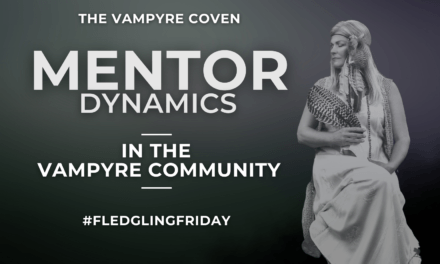



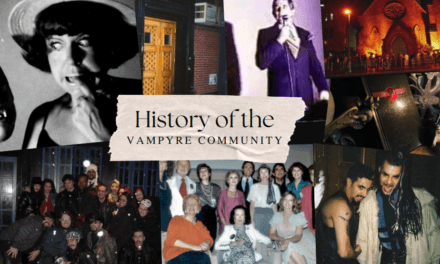







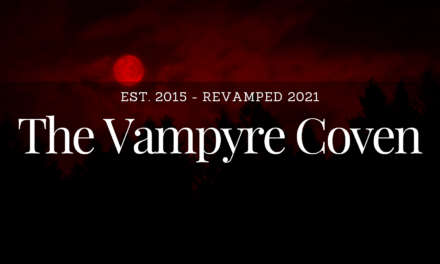
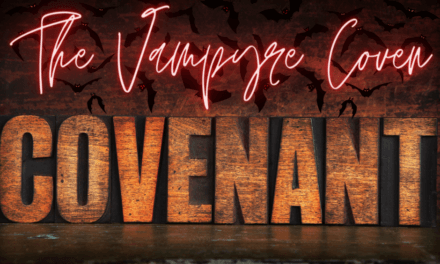



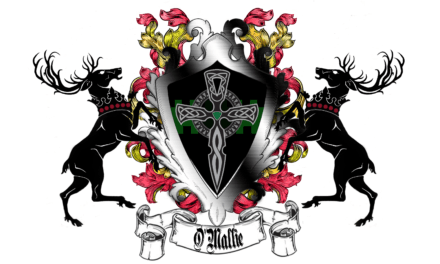





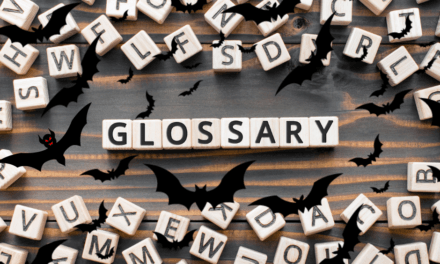


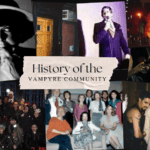




Recent Comments